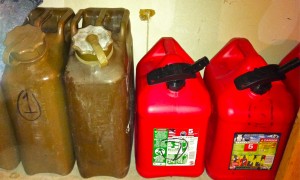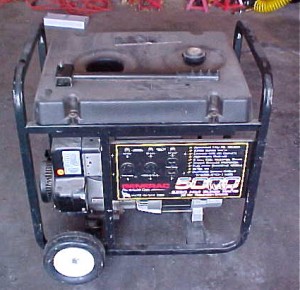We tend to use these phrases interchangeably, assuming they mean basically the same thing.
 Recently on TSP (episode 754) Jack clearly defined and delineated them. I did a quick Google search and–even though these words previously existed–I believe Jack has created a new prepper definition of these words; Jack Spirko originals, if you will.
Recently on TSP (episode 754) Jack clearly defined and delineated them. I did a quick Google search and–even though these words previously existed–I believe Jack has created a new prepper definition of these words; Jack Spirko originals, if you will.
Self-Reliance is having stored preps; it’s like having money in a ‘rainy day’ account, or an insurance policy; it just sits there, available if we need it. Jack defined self-reliance as: “a finite resource that’s held in reserve in case another system fails”. We preppers understand this. We all have stockpiles of stuff that we don’t want to use unless we have to; we will only use enough to keep things rotated. In a total TEOTWAWKI most of these items, once they were used up, would no longer be available in their modern forms. Examples, organized into bullets of our five basic needs, include:
 short and long term food storage, factory canned food, food not locally produced
short and long term food storage, factory canned food, food not locally produced- bottled water, chemicals used to purify water
- toilet paper, clothes, plastic bags
- ammunition, most pharmacological medicines including antibiotics
- batteries, flashlights, fuel, light bulbs
Self-Sufficiency is sustainable. Jack defined self-sufficiency as: “it’s own independent system that’s not dependent on someone else’s system . . . even when the system of support is currently available.” This describes the portion of your needs you are able to produce, and use on a daily basis, whether the current systems are in place or not:
 gardens, livestock, canning and other food preservation
gardens, livestock, canning and other food preservation- wells, septic systems, water filters, rain barrels
- handmade furniture, handmade quilts
- bows and arrows, musket balls and powder
- solar, wind, and/or hydro power
A defining characteristic is how they are measured. Self-reliance is measured in time, it is “finite, it’s wholly self-limiting,” e.g. you have enough food stored for six months, enough batteries for three months, enough water for 30 days. Self-sufficiency is measured by percentages, it is essentially indefinite (for the sake of a human life-cycle), e.g. you can produce 20% of your food needs, produce 30% of your energy needs.
This is not to say that one is better than another, just different. Both, in our typical current worlds, are necessary. Right now the systems are in place; use them, enjoy them, just don’t become overly dependent on them being there forever. Self-reliance is typically the main thing people focus on when they initially move into a prepper mentality. Self-reliance is about stockpiling needed stuff. As we’re building our preps, look toward the goal of self-sufficiency and developing and using skills to produce needed items. Remember to view self-sufficiency as a percentage of our needs, not our wants.
Being self-reliant will give us a buffer to get our self-sufficient skills up to full speed, i.e. using our food storage for the winter and spring, until the gardens begin producing.
As preppers, if we understand these concepts we can use them to help us define our plans and set our goals. As we know–and I discussed in Buying Stuff Is Easy–stuff can be destroyed, taken, left-behind, or lost. But knowledge and skill sets exist as long as you maintain proficiency with them.
(Friday: What I Did This Week To Prep)
P.S. I was using these words interchangeably myself when I initially started my blog. My subtitle under the name ‘Trace My Preps’ said ‘A Prepper / Self-Reliant Blog’. I have now changed it to: ‘My Journey through Self-Reliance into Self-Sufficiency’.






















